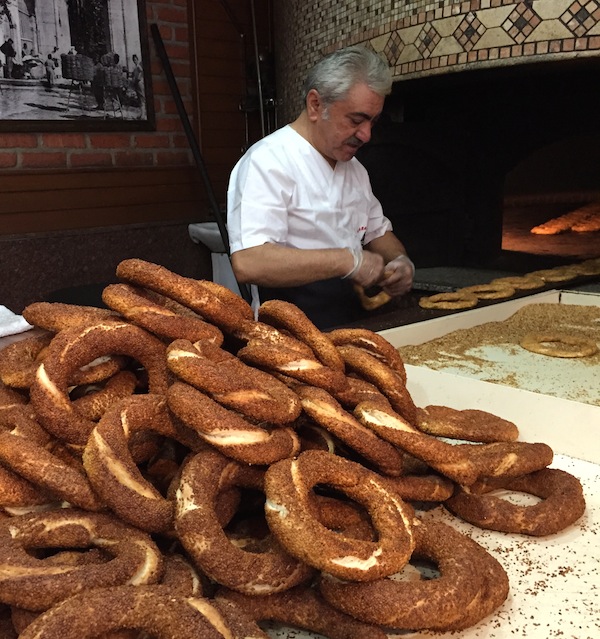Simit is nothing less than a 500-year love affair. Turks have been eating this sesame-studded circular bread since the 16th Century. It is Turkey’s quintessential street food — an inextricable part of the daily diet and an emblematic, inescapable sight in the country.
Anytime seems to be a good time to savour a simit: at breakfast to fuel up for the day; as a sandwich base with cheese and meats for lunch; the perfect snack accompaniment to a cup of tea, or cay in local speech. So what explains its enduring popularity? A mere bite is all it takes to understand this national addiction.
It begins with a crunch. The simit is sturdy, its exterior crusty and golden. Then the fragrance of toasted sesame seeds settles in, escorted by a mild, sweet undertone. What starts off looking like a bagel tastes like a hot pretzel, the interior soft, yielding, and comforting. Full of flavour and texturally entrancing, this is exactly the sort of food that is habit-forming.
Across Turkey, simits can be affordably procured from the multitude of street vendors selling them in glass-covered, red-trimmed pushcarts. Sellers also stack them high up on a tray, deftly balanced on the head and taken through the streets like a mighty Jenga tower of braided bread. But here’s advice for epicureans seeking a taste of the sublime: hunt down a traditional bakery where the simits are warm from the oven.

Watch on as bakers roll out a simple mixture of flour, water, and yeast into long strips with their palm. Like a rope, the dough is rapidly twisted and then joined at the ends to form a ring. Next, the dough rings are dipped into pekmez, grape molasses that gives simit its caramelised colour and aforementioned sweetness. Finally the dough is coated with sesame seeds and baked for no more than 20 minutes. Try a fresh simit and you’ll never look at those on the street the same way.
Not all simit is created equal, and regional variations abound. They’re smaller and crisper in the capital Ankara; while in Antakya, they’re unseeded and characteristically massive… no less than eight inches in diameter. The version in Izmir, though similar to the most ubiquitous kind from Istanbul, goes by a different name: gevrek.
In keeping with the times, simit takes many modern forms. It’s now available with multigrain flour, crusted with sunflower seeds, filled with Nutella. Yet nothing beats the original. An estimated 2.5 million sesame simits are eaten every day in Turkey.
Now that’s a love affair as ardent and abiding as they come.
**A version of this article appears in the magazine Alef**


